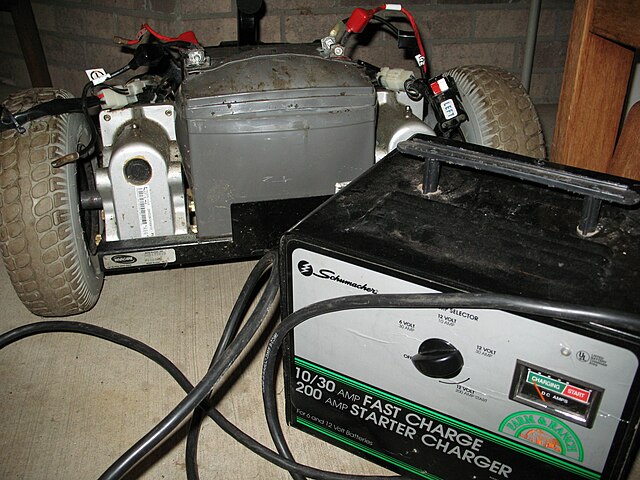A valve regulated lead–acid (VRLA) battery, commonly known as a sealed lead–acid (SLA) battery, is a type of lead–acid battery characterized by a limited amount of electrolyte absorbed in a plate separator or formed into a gel; proportioning of the negative and positive plates so that oxygen recombination is facilitated within the cell; and the presence of a relief valve that retains the battery contents independent of the position of the cells.
A 12V VRLA battery, typically used in small uninterruptible power supplies and emergency lamps
Cutaway view of a 1953 automotive battery
Broken gel battery with white gobbets of the gelated electrolyte on the plates
The lead–acid battery is a type of rechargeable battery first invented in 1859 by French physicist Gaston Planté. It is the first type of rechargeable battery ever created. Compared to modern rechargeable batteries, lead–acid batteries have relatively low energy density. Despite this, they are able to supply high surge currents. These features, along with their low cost, make them attractive for use in motor vehicles to provide the high current required by starter motors. Lead–acid batteries suffer from relatively short cycle lifespan and overall lifespan, as well as long charging times.
12-volt lead–acid car battery
Internal view of a small lead-acid battery from an electric-start–equipped motorcycle
Charge current needs to match the ability of the battery to absorb the energy. Using too large a charge current on a small battery can lead to boiling and venting of the electrolyte. In this image a VRLA battery case has ballooned due to the high gas pressure developed during overcharge.
Sulfated plates from a 12-V 5-Ah battery







